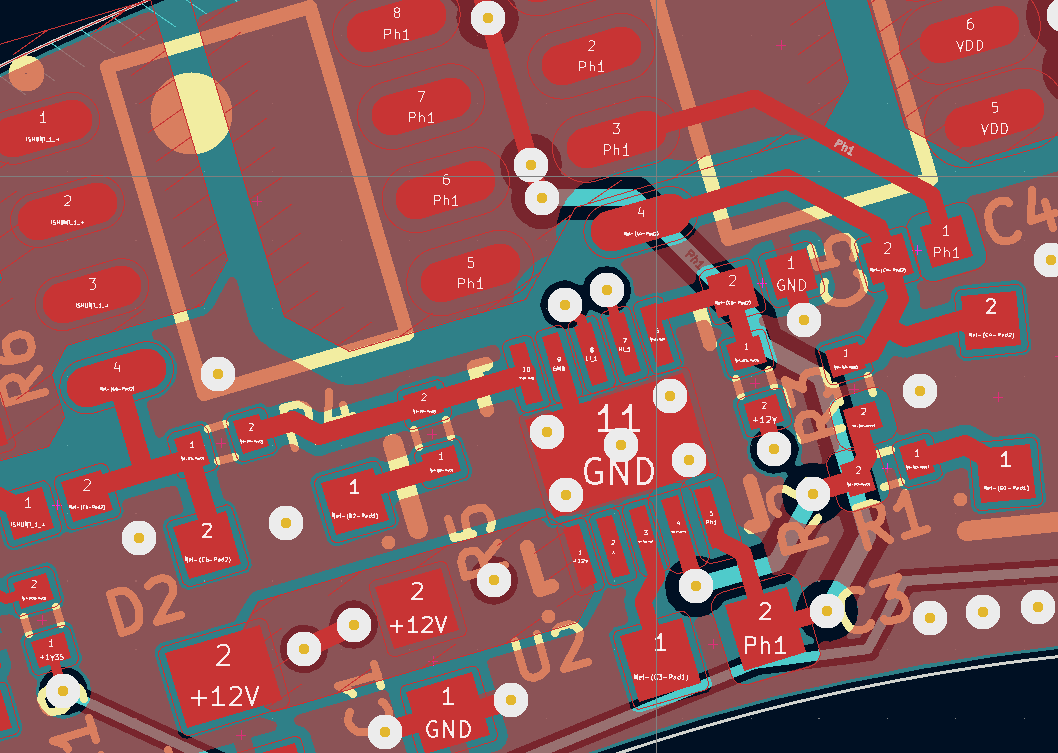Hi,
I am currently working on the power control PCB for a FOC controlled BLDC motor. The three phases of the motor are powered using three LM5108 coupled to 6 MOSFETs (1 LM5108 + 2 half bridge MOSFET per phase). PWMs are generated by a micro-controller on the same board.
We are experiencing multiple failures of the LM5108 part on many of our boards (at least 25 of them). I have measured negative transients (-10V) across HO and HS pins during MOS switch-off which are probably linked to the MOS Ciss capacitors + motor coils discharging into the driver while switching. As the HO pin is rated for negative voltages reaching HS-0.3V, I suspect this is the origin of my troubles.
I am planning on adding a series resistance on HO and LO pins to slow the current discharge. I also may add schottcky diodes between HO and VDD and HO and HS (same for LO pin). Could you confirm I am not missing anything here please ? I having included layout and schematic as it may help.
PS: In recent testing, the sub layer (blue) route linking HO (pin 4) to R1 melted and acted like a fuse. Do you think vias/tracks are undersized (vias are 0.15mm drill and 0.5mm diameter, tracks are 0.250mm)? I tried following the datasheet instructions as much as possible.
Thank you in advance for any help you can provide !
Best regards,



